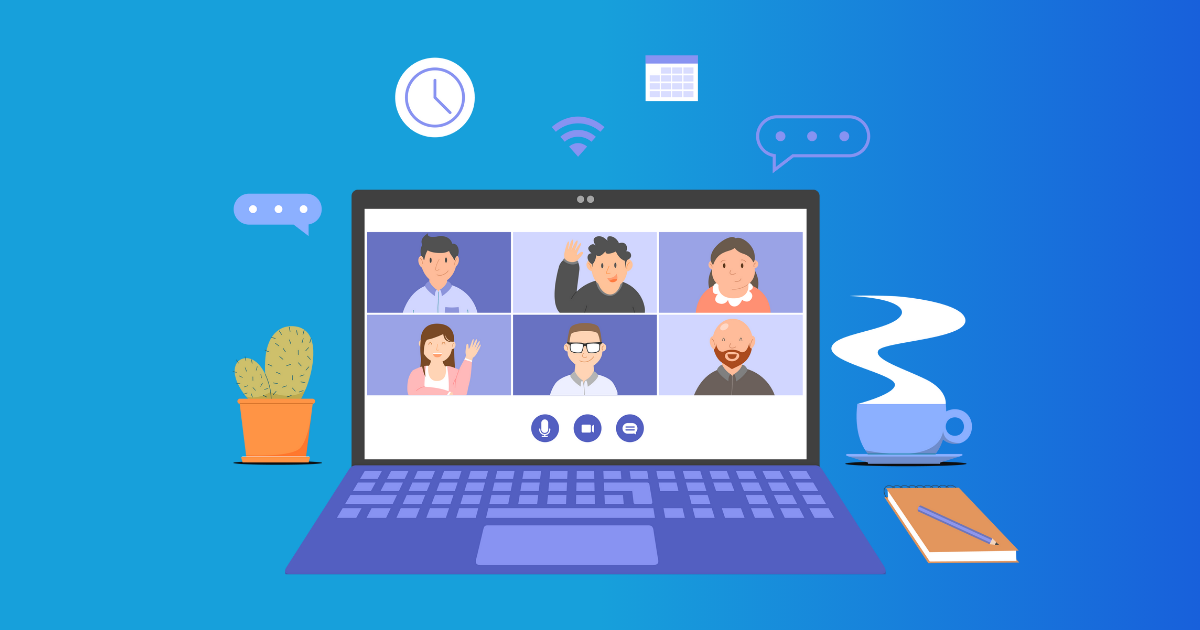Table of Contents
- Understanding Jitsi’s Architecture for Large Deployments
- Jitsi Videobridge and Load Distribution
- Hardware and Infrastructure Requirements for Jitsi Scaling 1000 Users
- Case Study: Scaling Jitsi at Scale
- Step-by-Step Guide to Optimize Jitsi for 1000+ Users
- Step 1: Prepare Your Server Environment
- Step 2: Deploy Multiple JVB Instances
- Step 3: Adjust Jitsi Videobridge Configurations
- Step 4: Optimize Video Quality and Bandwidth
- Step 5: Enable Performance Monitoring
- Step 6: Use Advanced Features for Large Conferences
- Dealing with Jitsi No Lag and Performance Optimization
- Real-World Experience
- Security and Reliability in Large Jitsi Setups
- Helpful Tips and Common Pitfalls
- Conclusion
Kicking Jitsi Meet into high gear to handle over 1000 users isn’t for the faint-hearted. It’s all about strategy, resources, and smart configurations. Everyone loves Jitsi for being open-source and readily available, but scaling up to a large setup? That’s where it starts getting tricky. If you’re aiming for seamless Jitsi scaling for 1000 users without encountering annoying lag or dropped connections, heed this guide. We’ll take you from server hardware basics to those elusive advanced configurations.
Understanding Jitsi’s Architecture for Large Deployments
Before aiming for optimization glory, let’s talk structure. Jitsi Meet leverages something called a Selective Forwarding Unit (SFU), specifically Jitsi Videobridge (JVB), to juggle video streams between participants. Unlike traditional systems, it doesn’t mix or transcode streams, which keeps server load light. But it’s not all roses; you’ve got to manage participants’ video streams meticulously to fend off overload.
Jitsi Videobridge and Load Distribution
A single JVB might smoothly handle about 50-75 active video streams, hardware willing. But for 1000+ users, it’s time to call in reinforcements. Deploy multiple JVBs with a load balancer—or better yet, use a Jitsi Videobridge pool. This approach shares the load, avoiding the potential meltdown of a solitary JVB.
For a truly robust setup, here’s the combo:
- Multiple JVBs
- A Jitsi Meet web front-end
- A Prosody XMPP server for signaling
- Jicofo (Jitsi Conference Focus) coordinating conferences
Your multi-component environment will need some careful choreography to keep things running smoothly.
Hardware and Infrastructure Requirements for Jitsi Scaling 1000 Users
The bedrock of a significant Jitsi deployment? Solid hardware or cloud setup. Specs will shift based on user behavior (like video preferences), but here’s some wisdom from large-scale deployment veterans.
- CPU: Go for multi-core CPUs. At least 16 cores at 2.5GHz+ for hosting multiple JVBs.
- RAM: A good 64GB+ of RAM for stability when juggling numerous streams.
- Network: Gigabit networking with at least 1Gbps bandwidth per JVB is crucial.
- Storage: Toss in some fast SSDs for OS and logs; Jitsi ain’t storage-hungry.
- Cloud Support: Kubernetes or Docker Swarm are favorites for managing Jitsi clusters automatically.
Case Study: Scaling Jitsi at Scale
Imagine this: a client needed a setup for university lectures. They went for a Kubernetes cluster with 10 JVB nodes, each sporting 16 cores and 64GB RAM. Supported over 1200 users in breakout rooms—no lag in sight. Distributed architecture at work!
Step-by-Step Guide to Optimize Jitsi for 1000+ Users
Step 1: Prepare Your Server Environment
- Stick with Ubuntu 22.04 or newer for top stability with Jitsi.
- Begin with Jitsi Meet using its official quick-install script.
- Ensure CPU and memory are earmarked for JVB to avoid resource contention.
- Fine-tune Swappiness and network specs for real-time streaming.
Step 2: Deploy Multiple JVB Instances
- Spin up multiple JVBs on separate servers or containers.
- Configure Prosody’s XMPP for recognizing multiple JVBs.
- Distribute signaling connections using DNS round-robin or an advanced load balancer like nginx.
- Don’t miss enabling
org.jitsi.videobridge.ENABLE_STATISTICS=truefor real-time load insights on each bridge.
Step 3: Adjust Jitsi Videobridge Configurations
Head to /etc/jitsi/videobridge/sip-communicator.properties and tweak:
-
Amp up maximal SSRCs per endpoint when needed:
org.jitsi.videobridge.SINGLE_PORT_HARVESTER_ENABLED=true org.ice4j.ice.harvest.STUN_MAPPING_HARVESTER_ADDRESSES=stun.l.google.com:19302 org.jitsi.videobridge.ENABLE_STATISTICS=true -
Hit those
WebRTCoptions like simulcast:enable-layer-encoding = true
Step 4: Optimize Video Quality and Bandwidth
-
Enable Simulcast, letting clients send and receive multiple video streams at varying qualities.
-
Set cautious defaults for max video bandwidth per user in
/etc/jitsi/meet/yourdomain-config.js:maxBitratesVideo: { low: 150000, standard: 500000, high: 1200000 }, -
Tinker with options like disabling video or limiting resolution for participants on standby.
-
The LastN feature can curb the number of videos a user sees at a time.
Step 5: Enable Performance Monitoring
- Utilize tools like Jitsi JVB Stats API along with Prometheus + Grafana for real-time statistics.
- Keep tabs on CPU, bandwidth, and participant counts per bridge.
- Be ready to adjust by scaling JVBs or fine-tuning configurations when needed.
Step 6: Use Advanced Features for Large Conferences
- Breakout Rooms: Breaking down groups eases conference load.
- Recording and Streaming: Offload through Jibri instances placed elsewhere.
- Authentication and Access Controls: Keep unwanted guests out and manage meeting sizes.
Dealing with Jitsi No Lag and Performance Optimization
Lag? Often a byproduct of overworked CPUs, limited networks, or unoptimized settings.
- Monitor server health (CPU, memory pressure) regularly.
- Reduce video resolution or switch off video for non-speakers to ease the load.
- Recommend users go wired and enable hardware acceleration where browser permits.
- Tweak network settings: make UDP your go-to for media transport, only fallback to TCP if necessary.
- Leverage the Colibri REST API for automatic video quality adjustments.
Real-World Experience
Just handling Jitsi performance by distributing more petite rooms, adjusting simulcast, and scaling JVBs provides clients with minimal lag—even with 1000+ participants.
Security and Reliability in Large Jitsi Setups
Running a large Jitsi setup? Prioritize user data and communication security.
- HTTPS is essential, consider using Let’s Encrypt or approved TLS certificates.
- Implement authentication in Prosody so only authorized folks can create meetings.
- Regularly update Jitsi to outsmart vulnerabilities.
- Enforce firewall rules and network segmentation to shield JVB servers.
- Let users in on privacy features, like selective video sharing.
Helpful Tips and Common Pitfalls
- Avoid overloading one server with multiple JVBs if CPU resources are lacking.
- Ditch default configurations for production; tweak them for larger user volume.
- Run tests with simulated users using tools like Jitsi Meet Load Test.
- Don’t bank on a single machine to handle over 1000 users—think distributed setups.
- Watch for bandwidth caps from your cloud provider or ISP.
Conclusion
To get Jitsi to handle more than 1000 participants, you need more than just installing it. Craft a balanced, well-monitored, and optimized system. Multiple Jitsi Videobridge instances, configured video settings, powerful hardware, and robust network infrastructure are the pillars to achieve a smooth, lag-free Jitsi experience.
Follow these steps diligently, and you’re on the path to creating a reliable, secure, and scalable Jitsi setup primed for large meetings and webinars. Don’t skimp on monitoring and scale gradually based on actual usage.
Ready to upscale your Jitsi Meet deployment with confidence? Kick off with a small multi-bridge cluster to test things out before hitting full 1000+ capacity. With a bit of patience and these directions, you’ll craft an efficient, large Jitsi setup that your users will commend.
Need to chat about your sizable Jitsi configuration, or have specific concerns? Reach out or drop into Jitsi community forums. Scaling video conferencing to this level isn’t a breeze, but firsthand experience is gold.
Dive in and tweak Jitsi for your large-scale needs!
FAQ
Jitsi scaling 1000 users means configuring and optimizing [Jitsi Meet](https://jitsi.support/wiki/understanding-jitsi-basics/) to support more than 1000 concurrent participants without performance issues.
Optimizing [Jitsi](https://jitsi.support/wiki/understanding-jitsi-basics/) for large meetings involves proper server setup, load balancing, using video quality controls, and optimizing network and hardware resources.
Lag usually comes from insufficient bandwidth, overburdened CPU, or poor server configuration. Optimizing video bitrate, enabling simulcast, and proper server scaling reduce lag.
[Jitsi Meet](https://jitsi.support/wiki/understanding-jitsi-basics/) is not designed to handle 1000 video streams in a single room; however, it can support 1000+ users by using multiple servers in a cascade, breakout rooms, or selective forwarding.
Yes. Jitsi encrypts video streams and supports authentication options. Proper setup ensures data security compliance for large meetings.


